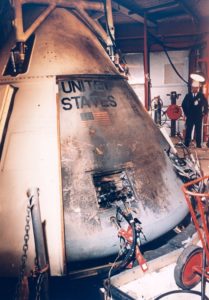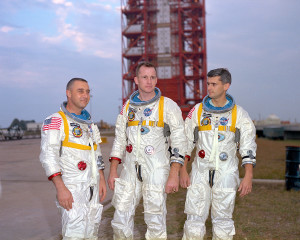January 27th, 2017 marks the 50th anniversary of the Apollo 1 fire, an event I’ve written about more than any other single event on this site. For the past 50 years, since the disaster, NASA has pretty much buried it. Unlike Challenger and Columbia, which occurred in 1986 and 2003 respectively, the 1967 deaths of Gus Grissom, Ed White, and Roger Chaffee have been mostly forgotten.

In 2015 a memorial for the crews of Challenger and Columbia opened which contained a side panel from the Space Shuttle Challenger, and the window frame from the Space Shuttle Columbia. These actual pieces of these vehicles, locked away from the public since the disasters, were met with positive reaction by the public. I, for one, feel as many tangible objects from such events should be preserved to provide a tangible, physical link to the event – such makes it more real, and puts it into a human scale better than photos and videos do.
While a hot topic of what to show, as there is a fine line between honoring the memory of the Apollo 1 astronauts and creating a monument to their deaths: While I for one would hope to one day be able to see, with my own eyes, the entire Apollo 1 Command Module, I know many others would find it too macabre to stand, and would find it disrespectful for it to be on display.
The hatch, however, the device which, sadly, was a key element in their tragic deaths, is certainly a fitting item to show. Reportedly on January 25th relatives of the Apollo 1 crew got to see the hatch – this being the first time even they had gotten to see any part of the spacecraft. It’s reported to be shown split into it’s primary sections, the inner and outer doors, which still show scorching from the fire.
Tomorrow, I have a couple of posts planned. I’m not going to turn this into my primary Apollo 1 post this year, especially not the day before the anniversary.

